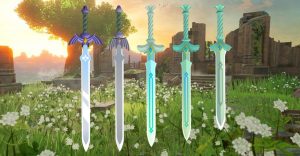Oddworld: Soulstorm Review – Abe’s Exodus Reimagined

From the moment Oddworld: Soulstorm begins, players will be enthralled by its stunning visuals and thrilling storyline. While it’s yet another tale of Abe desperately attempting to save the Mudokons from certain death, Oddworld: Soulstorm’s graphics, storyline, and world-building are enough to separate it from previous Oddworld titles. However, the game’s outstanding supporting elements are overshadowed by its lengthy and repetitive gameplay, bringing down an otherwise excellent experience.
The Oddworld franchise has been an outlier in the gaming sphere since Abe’s Odyssey was released in 1997. A direct sequel was released in 1998, Oddworld: Abe’s Exodus, which picked up right after Abe and the Mudokons escaped from the Magog Cartel. Oddworld: Soulstorm is not a remake of Abe’s Exodus, nor is it the third installment in Abe’s storyline. Developers Oddworld Inhabitants explain that Oddworld: Soulstorm is an alternate storyline continuing after Abe’s Odyssey.
In Soulstorm, Abe continues his journey to ensure the safety of his people while attempting to put the demons of his past to rest. The overall story is more serious in comparison to other Oddworld titles, as the signature dark humor of the franchise takes a back seat to brooding hellscape it’s set in. Oddworld: Soulstorm’s narrative is very gripping and does a fantastic job of portraying what it would be like to be a Mudokon on the run, but the story alone wouldn’t be as good if it weren’t for the game’s gripping visual quality.

Oddworld: Soulstorm has some truly impressive graphics, especially during its beautiful cutscenes. The level of detail during cutscenes is remarkable, and the environments Abe explores are filled with little story-telling details. Even though Abe is put in high-stakes situations almost constantly, it is difficult not to stop and admire each level’s design and explore its subtle layer of aesthetic narrative. Oddworld: Soulstorm sets the bar for future 2D platformers in terms of visuals, but it falls prey to the gameplay limitations of that genre.
Where Oddworld: Soulstorm’s thrill starts to fade is in its actual gameplay. The experience isn’t bad by any means, but it can be noticeably repetitive, which is a glaring issue when paired with the game’s length. As a 2D platformer, the controls are very straightforward and polished which makes controlling Abe feel satisfying, and there are a few mechanics outside of jumping and rolling that diversify gameplay. Yet Oddworld: Soulstorm is hindered by its lengthy levels and slow pacing.

A casual playthrough of Oddworld: Soulstorm’s 15 core levels takes roughly 20 hours. Each level takes around an hour to get through without hunting down every collectible and Mudokon. If players are attempting to get the best possible ending, finding the path that spares almost every Slig makes levels take even longer. For a 2D platformer that consists primarily of linear pathways, spending an hour in each level is far too long. While Oddworld: Soulstorm’s environments may be deserving of admiration, players will find they get old after the first 30 minutes of each level.
What isn’t an issue is the number of things there are to do in Oddworld: Soulstorm. There are over 1,400 Mudokons that need to be rescued, hundreds of collectible items, four different endings, and secret areas to discover in every level. However, the game offers little incentive to actually complete any of these sidequests which makes finding every Royal Jelly pointless. The game’s Quarma system incentivizes rescuing Mudokons to unlock the good or best endings, but all of the other collectibles are only there to keep completionists busy.

Unlike previous Oddworld titles, the rescued Mudokons in Oddworld: Soulstorm aren’t completely useless. Players can use the new crafting system to build items or customize weapons that can then be given to the Mudokons to make them slightly less useless. Finding and escorting them safely to a portal can feel like a chore, and their AI can make them even more frustrating to deal with. Their “helpful” actions provide comedic relief in an otherwise depressing atmosphere, but the Mudokons are better left behind for those who aren’t trying to get a specific ending.
Oddworld: Soulstorm is a fairly polished 2D platformer, and there aren’t any complaints about how Abe controls. The game knows what it’s trying to be and its core mechanics reflect that very well. But pairing Abe’s limited move set, linear pathways, and the length of the levels, makes gameplay feel very repetitive. Some new elements are introduced in every level, but a lot of the same mechanics are reused throughout the entire game. There are elements that are unique to certain levels that are interesting at first, but players will start to feel like they are doing the same things too many times in a row. Having to branch off for the fourth time in a single level to complete another identical task is a surefire way to kill the player’s momentum.

If the levels were shortened, it would make for a much more enjoyable experience. There’s nothing wrong with the design of the levels other than their length, which can make players grow tired by the end. Oddworld: Soulstorm’s levels are challenging, and players can modify how much of a challenge they want to face by changing their playstyle. Murdering every Slig along the way may be the easiest route, but playing as a pacifist is more rewarding in the long run. There are several points throughout every level where the game challenges the player’s intellect and skill, and the feeling of overcoming these feats feels rewarding.
There are plenty of throwable items for players to experiment with, but the most fun to be had is found in Abe’s ability to possess enemies. This allows the use of different weaponry and also allows players to reach areas Abe couldn’t. Having a Slig gun down his own teammates is a very fun and satisfying experience and there is no shortage of these moments. That being said, there are various points throughout the game where Abe is blocked from using his abilities which feels like a cheap way to make the game more challenging. With the number of difficult scenarios Abe is put in already, robbing Abe of his abilities makes for unnecessary choke points.

Oddworld Inhabitants have noted that there are a couple of bugs players might experience that have since been patched out. The first is an infinite fall loop that happens if Abe falls to his death, and the second is a PS4 specific bug that boots players back to the home screen when playing on Nectrum_In. One major bug encountered while playing affects how enemies spawn when Abe dies. Enemies may not appear in the correct locations or their AI may break if they stop detecting a player. This can cause enemies to spawn where they shouldn’t be causing levels to be unintentionally harder or easier. This bug appears frequently and often forces players to die or restart from the last checkpoint.
Oddworld: Soulstorm’s repetitive gameplay doesn’t make it a bad game, but it does limit the demographic of players that will thoroughly enjoy the game all the way through. Its story and visuals are very impressive and help carry a lot of the game’s weight, but playing through hour-long levels with little story elements in between can make Oddworld: Soulstorm a very slow burn. Fans of the Oddworld franchise and 2D platforming games won’t be disappointed, but Oddworld: Soulstorm won’t keep everyone hooked for very long.
Oddworld: Soulstorm is available on PC, PlayStation 4, and PlayStation 5. Screen Rant was provided a digital PlayStation 5 code for the purpose of this review.
About The Author
















